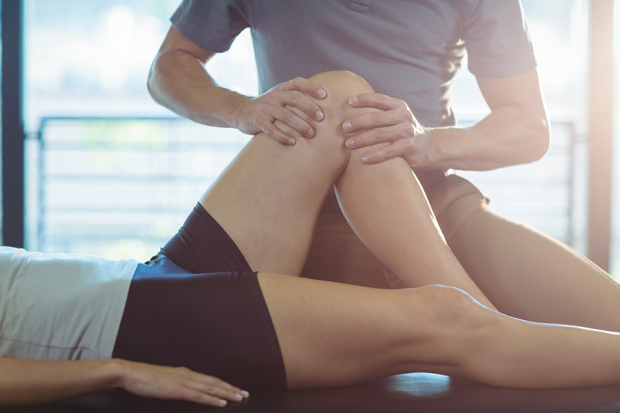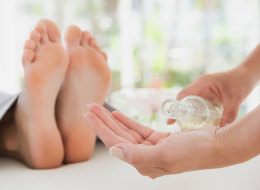Massage Techniques Sports Massage Facts: What It Is, When To Get One
A sports massage isn’t just for athletes. The invigorating, healing massage technique helps treat chronic muscle pain and can assist in healing injuries.
The term “sports massage” often misleads people into thinking that the massage technique is solely for athletes, but a sports massage can have healing benefits for people who aren’t professional athletes, as well.
It’s true that the sports massage was developed to help athletes recover from sporting events and function at optimum levels during training and performance, but the sports therapy is also good for non-athletes who have chronic pain, restricted range of motion and injuries.
The Special Benefits of Sports Massage
Unlike other types of massage, a sports massage typically focuses on a specific problem area for the duration of the appointment. Examples of injuries or problems that may benefit from this type of massage include a pulled hamstring, sore knees, Achilles tendonitis or a frozen shoulder.
These types of injuries generally arise from sports activities like running, dancing, tennis, CrossFit and team sports. But your injury need not arise from athletic activities to potentially benefit from a sports massage.
Some sports massage benefits include the ability to reduce muscle tension and pain, improve flexibility and range of motion, shorten muscle recovery time, lower blood pressure, increase blood circulation and prevent future injuries for both athletes and non-athletes alike.
The most important thing to keep in mind before getting a sports massage is to make sure you visit a specially trained, qualified and experienced massage therapist. Many spas offer sports massage as a way to appeal to male clients, but you should ask about the qualifications of the masseuse before booking an appointment. Only trust therapists with specialized training, deep knowledge of massage techniques and a keen interest in anatomy and physiology in order to avoid the risk of the massage potentially making your pain or injury worse.
What To Expect During A Sports Massage
The specifics of a sports massage session vary, depending on the client’s desired goal during the appointment. Most sports massage sessions focus on the problem area rather than a full body massage. For example, if you’re experiencing pain from Achilles tendonitis, your sports massage therapist will likely concentrate on the affected foot in order to help break down scar tissue and stimulate blood flow, both of which can assist in healing.
MORE FROM FOOTFILES:
Most of the time, a sports massage consists of a combination of different massage techniques. The therapist may rotate between deep tissue massage or trigger point therapy to release muscle knots and Swedish massage to stimulate blood flow. It’s also typical for the therapist to give you “homework,” or post-massage exercises you can do to maintain the work performed and continue the healing process at home.
READ MORE: Foot Massage Techniques From Aahh to Zzz
Because sports massage sessions are aimed at healing rather than to help with relaxation, it’s not uncommon to feel pain that ranges from mild discomfort to more intense soreness during the massage. If the session becomes too painful, alert your massage therapist so he or she can either change techniques or find a way to make the massage less painful. Contrary to popular belief, a sports massage does not have to hurt to be effective. (They do, however, often cause post-massage soreness, which is normal and can help you better assess problem areas.)
You may have the option of choosing between a pre-event massage, which helps ready parts of the body most likely to be exerted or prone to injury; a post-event massage, which helps restore tissue immediately after extreme exertion; a restorative massage, which helps keep the body in top shape during training; or a rehabilitative or recovery massage, which aims to alleviate pain and help treat injuries.
No matter what techniques your sports massage therapist decides to try, it’s important that he or she communicates with you and is clear about your expectations for both the massage and the results of the therapeutic treatment. Only then can a sports massage live up to its potential to help heal chronic pain, treat injuries, increase flexibility, stimulate blood flow and leave you with an increased sense of health and well-being.
Notice concerning medical entries:
Articles having medical content shall serve exclusively for the purpose of general information. Such articles are not suitable for any (self-) diagnosis and treatment of individual illnesses and medical indications. In particular, they cannot substitute for the examination, advice, or treatment by a licensed physician or pharmacist. No replies to any individual questions shall be effected through the articles.






